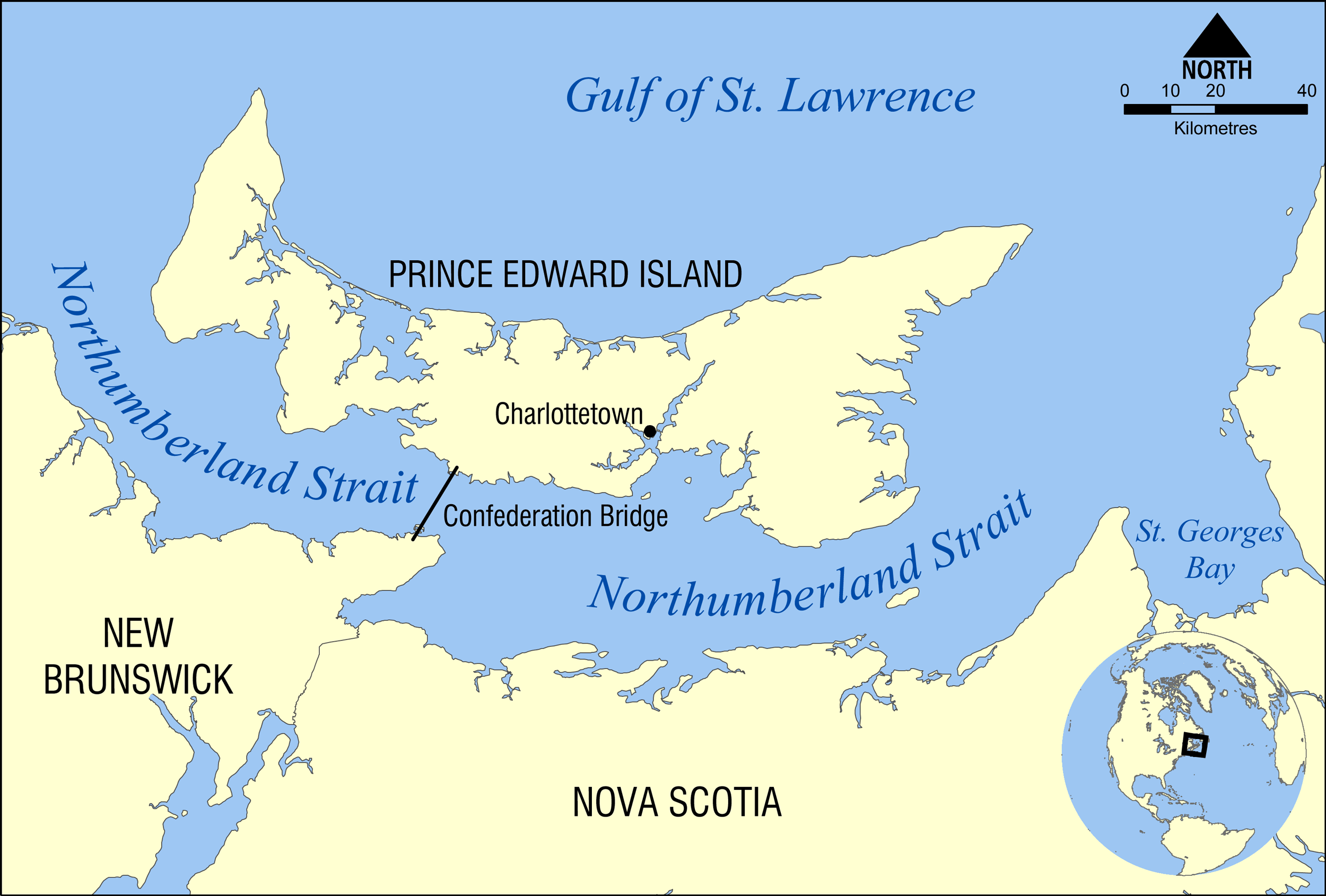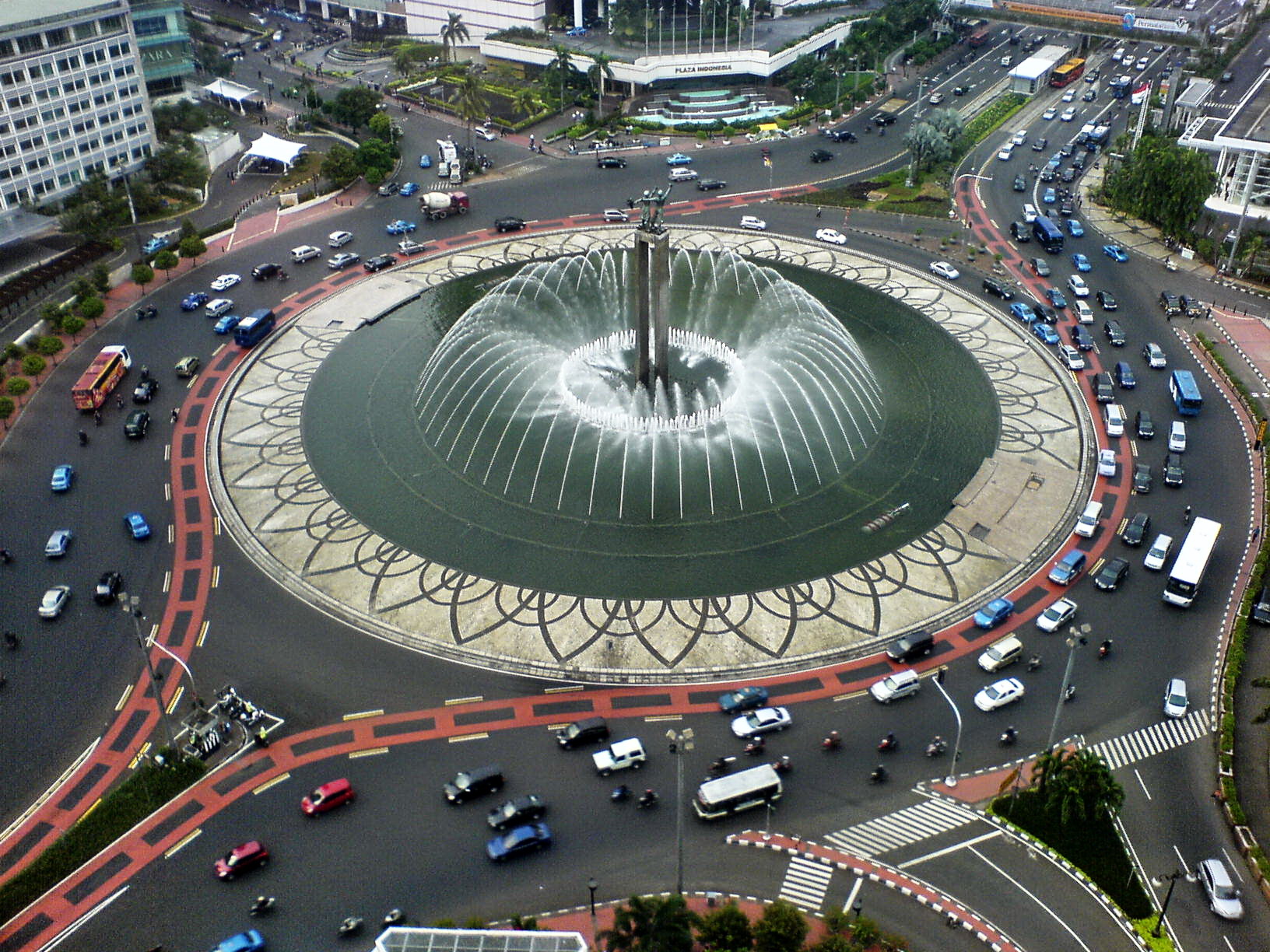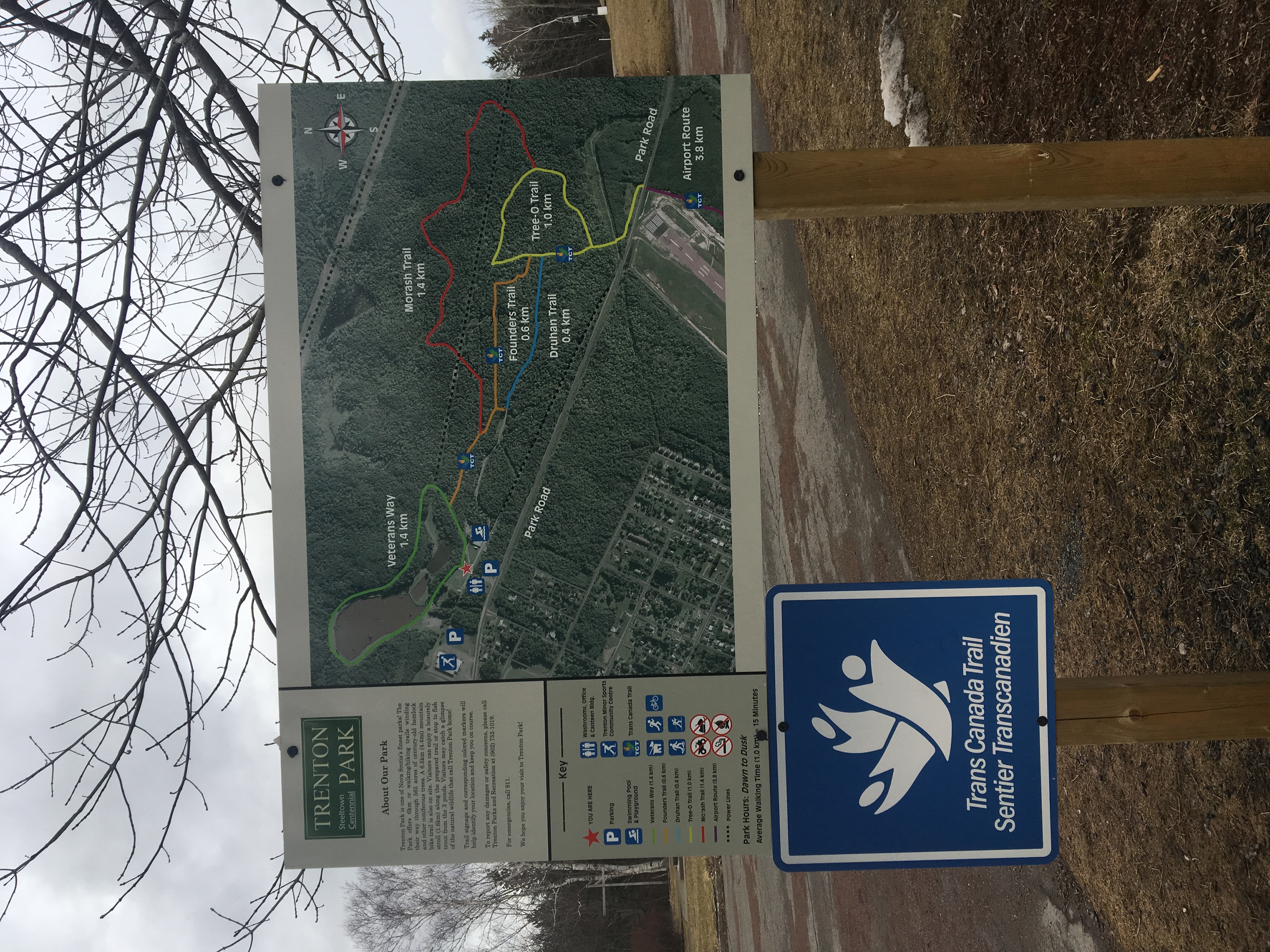|
Nova Scotia Highway 106
Highway 106 is a 2-lane limited-access highway located within Pictou County, in the Canadian province of Nova Scotia. The provincial government named the highway the Jubilee Highway on December 21, 2012 in honour of Queen Elizabeth II's Diamond Jubilee. The highway is part of the Prince Edward Island loop of the Trans-Canada Highway and connects the Northumberland Ferries terminal in Caribou in the north with the mainline Trans-Canada at Highway 104 near Mount William in the south, east of New Glasgow. Route description Highway 106 begins at a trumpet interchange with Highway 104. The route bypasses to the west side of New Glasgow by running along the centre of Abercrombie Point. It crosses Pictou Harbour to the town of Pictou using the Harvey A. Veniot Causeway, which opened in 1968. A traffic circle at the west end of Pictou, known as the Pictou Rotary, connects Highway 106 with the centre of town as well as Trunk 6 (the Sunrise Trail) and Route 3 ... [...More Info...] [...Related Items...] OR: [Wikipedia] [Google] [Baidu] |
Trans-Canada Highway
The Trans-Canada Highway (Canadian French, French: ; abbreviated as the TCH or T-Can) is a transcontinental federal–provincial highway system that travels through all ten provinces of Canada, from the Pacific Ocean on the west coast to the Atlantic Ocean on the east coast. The main route spans across the country, one of the longest routes of its type in the world. The highway system is recognizable by its distinctive white-on-green maple leaf route shield, route markers, although there are small variations in the markers in some provinces. While by definition the Trans-Canada Highway is a highway ''system'' that has several parallel routes throughout most of the country, the term "Trans-Canada Highway" often refers to the main route that consists of Highway 1 (British Columbia, Alberta, Saskatchewan, and Manitoba), Highways 11 & 17/417 (Ontario), Autoroutes 40, 25, 20, 85 & 185 (Quebec), Highway 2 (New Brunswick), Highways 104 and 105 (Nova Scotia), and ... [...More Info...] [...Related Items...] OR: [Wikipedia] [Google] [Baidu] |
Harvey Veniot
Harvey Alfred Veniot, (November 18, 1915 – October 2, 2009) was a lawyer, judge and political figure in Nova Scotia, Canada. He represented Pictou West in the Nova Scotia House of Assembly from 1956 to 1974 as a Progressive Conservative member. Veniot was born in Pictou, Nova Scotia, the son of Alexander R. Veniot and Gladys Maclean, and was educated at Pictou Academy, St. Francis Xavier University, Dalhousie Law School and the University of Saskatchewan. He was called to the Nova Scotia bar in 1940. Veniot married Rhoda Marion MacLeod in 1944. Political career Veniot served as a town councillor in Pictou from 1945 to 1946. In 1953, he was an unsuccessful candidate for a seat in the provincial assembly, losing to Liberal incumbent Stewart W. Proudfoot by 9 votes. Veniot ran again in the 1956 election, defeating Proudfoot by 88 votes to win the Pictou West riding. In 1958, he was named Queen's Counsel. Veniot was re-elected in the 1960, 1963, 1967, and 1970 elections. ... [...More Info...] [...Related Items...] OR: [Wikipedia] [Google] [Baidu] |
Northumberland Strait
The Northumberland Strait (French: ''détroit de Northumberland'') is a strait in the southern part of the Gulf of Saint Lawrence in eastern Canada. The strait is formed by Prince Edward Island and the gulf's eastern, southern, and western shores. Boundaries The western boundary of the strait is delineated by a line running between North Cape, Prince Edward Island and Point Escuminac, New Brunswick while the eastern boundary is delineated by a line running between East Point, Prince Edward Island and Inverness, Nova Scotia. Hydrography The Northumberland Strait varies in depth between 17 and 65 metres, with the deepest waters at either end. The tidal patterns are complex; the eastern end has the usual two tides per day, with a tidal range of 1.2 to 1.8 metres, while the western end effectively has only one tide per day. The strait's shallow depths lend to warm water temperatures in summer months, with some areas reaching 25° C, or 77° F. Consequently, the strait is re ... [...More Info...] [...Related Items...] OR: [Wikipedia] [Google] [Baidu] |
Sunrise Trail
The Sunrise Trail is a scenic roadway in the Canada, Canadian province of Nova Scotia. It is located along the province's North Shore (Nova Scotia), North Shore on the Northumberland Strait for from Amherst, Nova Scotia, Amherst to the Canso Causeway. Routes *Nova Scotia Trunk 4, Trunk 4 *Nova Scotia Trunk 6, Trunk 6 *Nova Scotia Route 245, Route 245 *Nova Scotia Route 337, Route 337 *Nova Scotia Route 366, Route 366 *Nova Scotia Highway 104, Highway 104 *Nova Scotia Highway 106, Highway 106 Communities *Amherst, Nova Scotia, Amherst *Truemanville, Nova Scotia, Truemanville *Tidnish Bridge, Nova Scotia, Tidnish Bridge *Tidnish, Nova Scotia, Tidnish *Lorneville, Nova Scotia, Lorneville *Port Howe, Nova Scotia, Port Howe *Pugwash, Nova Scotia, Pugwash *Wallace, Nova Scotia, Wallace *Malagash, Nova Scotia, Malagash *Tatamagouche, Nova Scotia, Tatamagouche *River John, Nova Scotia, River John *Caribou, Nova Scotia, Caribou *Pictou, Nova Scotia, Pictou *New Glasgow, Nova Scotia, ... [...More Info...] [...Related Items...] OR: [Wikipedia] [Google] [Baidu] |
Roundabout
A roundabout, a rotary and a traffic circle are types of circular intersection or junction in which road traffic is permitted to flow in one direction around a central island, and priority is typically given to traffic already in the junction.''The New Shorter Oxford English Dictionary,'' Volume 2, Clarendon Press, Oxford (1993), page 2632 In the United States, engineers use the term modern roundabout to refer to junctions installed after 1960 that incorporate design rules to increase safety. Compared to stop signs, traffic signals, and earlier forms of roundabouts, modern roundabouts reduce the likelihood and severity of collisions greatly by reducing traffic speeds through horizontal deflection and minimising T-bone and head-on collisions. Variations on the basic concept include integration with tram or train lines, two-way flow, higher speeds and many others. For pedestrians, traffic exiting the roundabout comes from one direction, instead of three, simplifying the p ... [...More Info...] [...Related Items...] OR: [Wikipedia] [Google] [Baidu] |
Pictou
Pictou ( ; Canadian Gaelic: ''Baile Phiogto'' Miꞌkmawiꞌsimk: ''Piktuk'') is a town in Pictou County, in the Canadian province of Nova Scotia. Located on the north shore of Pictou Harbour, the town is approximately 10 km (6 miles) north of the larger town of New Glasgow. Once an active shipping port and the shire town of the county, today Pictou is primarily a local service centre for surrounding rural communities and the primary tourist destination in this region of Nova Scotia. The name Pictou derives from the Mi'kmaq name , meaning "explosive place", a reference to the river of pitch that was found in the area, or perhaps from methane bubbling up from coal seams below the harbour. History Pictou had been the location of an annual Mi'kmaq summer coastal community prior to European settlement. Pictou was part of the Epekwitk aq Piktuk Mi'kmaq District, which included present-day Prince Edward Island and Pictou. The town of Pictou was a receiving point for ma ... [...More Info...] [...Related Items...] OR: [Wikipedia] [Google] [Baidu] |
Granton, Nova Scotia
Granton is a community in the Canadian province of Nova Scotia, located in Pictou County. It is the birthplace of Leonard W. Murray. The community was named for Granton, Edinburgh Granton is a district in the north of Edinburgh, Scotland. Granton forms part of Edinburgh's waterfront along the Firth of Forth and is, historically, an industrial area having a large harbour. Granton is part of Edinburgh's large scale Edinbur .... References External linksGranton on Destination Nova Scotia Communities in Pictou County Unincorporated communities in Nova Scotia {{PictouNS-geo-stub ... [...More Info...] [...Related Items...] OR: [Wikipedia] [Google] [Baidu] |
Trenton, Nova Scotia
Trenton is a town located in Pictou County, Nova Scotia, Pictou County, Nova Scotia, Canada. Founded in 1786, it is situated on the east bank of the East River of Pictou. The community gained its name in 1882 at the suggestion of a prominent citizen, Harvey Graham, after he visited Trenton, New Jersey. It was incorporated as a town on 11 March 1911. Economy Since the 1870s, the town's economy was tied to the TrentonWorks factory and its predecessors which occupies a large property along the East River of Pictou. This factory closed permanently in 2016 after various incarnations as a steel fabrication, railcar fabrication, and wind turbine tower fabrication facility. Since the late 1960s, the town has also been host to the Trenton Generating Station. Other large employers in the past have included a paint manufacturer (Tibbett's Paints) as well as a glass works (Trenton Glass). The town's economy is undergoing a transition to a post-industrial tertiary/service economy. Major ... [...More Info...] [...Related Items...] OR: [Wikipedia] [Google] [Baidu] |
Abercrombie, Nova Scotia
Abercrombie is a community in the Canadian province of Nova Scotia, located in Pictou County. The village is named after Col James Abercrombie of the 42nd Regiment of Foot who was killed in the Battle of Bunker Hill The Battle of Bunker Hill was fought on June 17, 1775, during the Siege of Boston in the first stage of the American Revolutionary War. The battle is named after Bunker Hill in Charlestown, Boston, Charlestown, Massachusetts, which was peri .... References Abercrombie on Destination Nova Scotia Communities in Pictou County {{PictouNS-geo-stub ... [...More Info...] [...Related Items...] OR: [Wikipedia] [Google] [Baidu] |
Cape Breton Island
Cape Breton Island (, formerly '; or '; ) is a rugged and irregularly shaped island on the Atlantic coast of North America and part of the province of Nova Scotia, Canada. The island accounts for 18.7% of Nova Scotia's total area. Although the island is physically separated from the Nova Scotia peninsula by the Strait of Canso, the long Canso Causeway connects it to mainland Nova Scotia. The island is east-northeast of the mainland with its northern and western coasts fronting on the Gulf of Saint Lawrence with its western coast forming the eastern limits of the Northumberland Strait. The eastern and southern coasts front the Atlantic Ocean with its eastern coast also forming the western limits of the Cabot Strait. Its landmass slopes upward from south to north, culminating in the Cape Breton Highlands, highlands of its northern cape. A large body of saltwater, the ("Golden Arm" in French), dominates the island's centre. The total population at the 2016 Canadian Census, 20 ... [...More Info...] [...Related Items...] OR: [Wikipedia] [Google] [Baidu] |
Prince Edward Island Highway 1
Route 1 is a long Numbered highways in Canada, provincial highway that serves as the Prince Edward Island section of the Trans-Canada Highway. Route 1 traverses the southern shores of Prince Edward Island, from the Confederation Bridge in Borden-Carleton to the Wood Islands, Prince Edward Island, Wood Islands ferry dock, and bypass (road), bypasses the provincial capital, Charlottetown. It is an uncontrolled access 2-lane highway with a maximum speed limit of , except within towns and urban areas. Route description Route 1 serves several towns and communities along the southern shore of Prince Edward Island, as well as bypass (road), bypassing the provincial capital, Charlottetown. The route begins at an intersection in Borden-Carleton, Prince Edward Island, Borden-Carleton at the northern end of the Confederation Bridge (the bridge itself and its approach roads are unnumbered National Highway System (Canada), federal roads). The bridge crosses the Northumberland St ... [...More Info...] [...Related Items...] OR: [Wikipedia] [Google] [Baidu] |
Super Two
A two-lane expressway or two-lane freeway is an expressway or freeway with only one lane in each direction, and usually no median barrier. It may be built that way because of constraints, or may be intended for expansion once traffic volumes rise. The term "super two" is often used by roadgeeks for this type of road, but traffic engineers use that term for a high-quality surface road. Most of these roads are not tolled. A somewhat related concept is a "four-lane undivided freeway". This is much rarer; a current example is U.S. Route 101 in California through Humboldt Redwoods State Park. In Europe, the concept of ''express road'' encompasses roads which are classified between a motorway and an ordinary road. It does not necessarily have two lanes. This concept is recognized both by European Union law and under the UNECE treaty. This type of road is not very standardized, and its geometry may vary from country to country or within a same country. These roads are usually, but ... [...More Info...] [...Related Items...] OR: [Wikipedia] [Google] [Baidu] |








